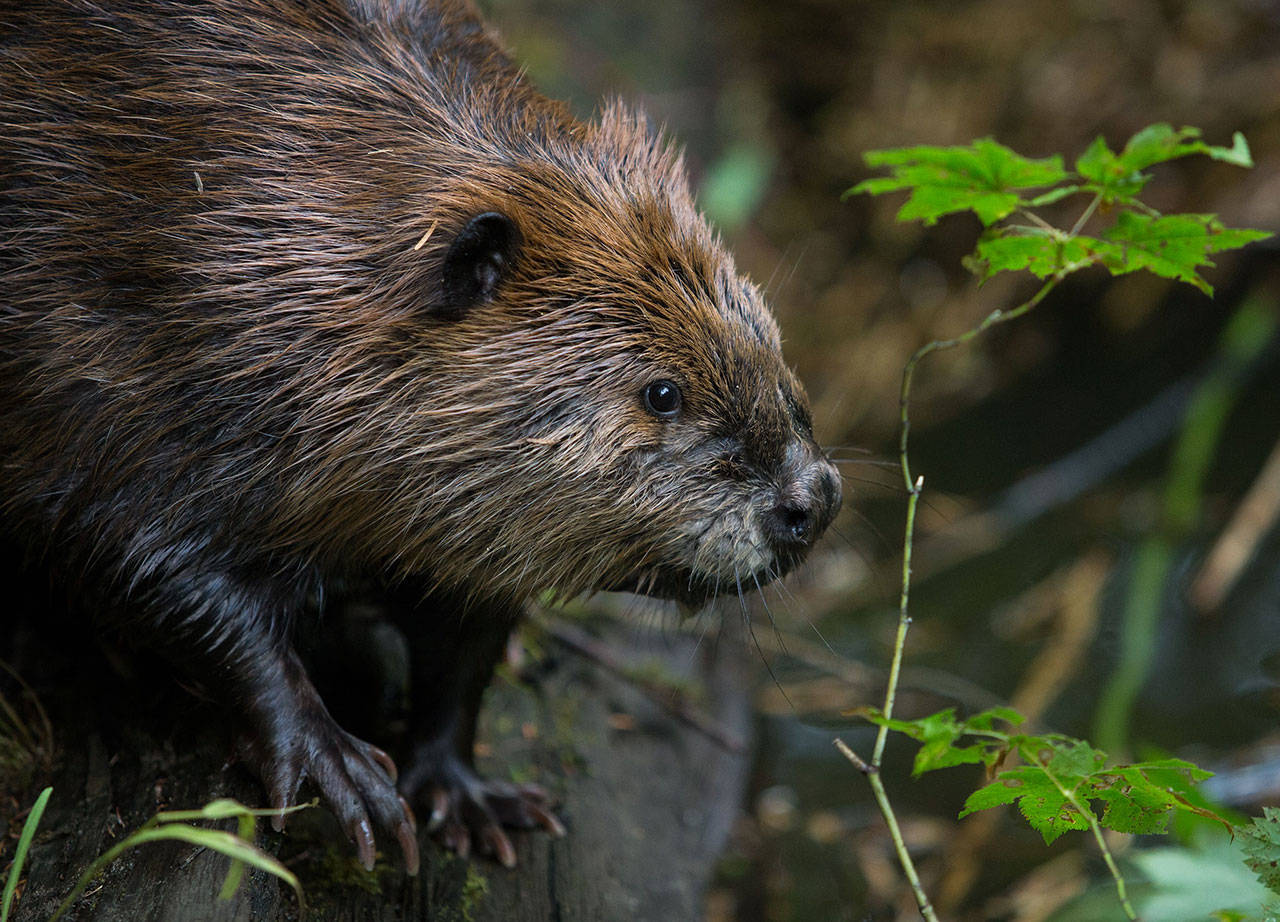EVERETT — In the Lake Chaplain watershed, beavers help ward off the impact of climate change and make streams more suitable for salmon.
But in the guardian of Everett’s water supply system, the creatures’ love of blocking running water is problematic.
The beavers stuff culverts with sticks, blocking water flow and fish passage. They build dams along the city’s service roads, flooding them.
The wild, semi-aquatic rodents leave their mark well beyond Everett’s boundaries.
All over Snohomish County, beavers clash with the human-built environment when they set up shop on private properties or next to roads, causing flooding and damage to homes.
But in the wild, beaver-built structures often have dramatic positive impacts on the environment.
So local, federal and tribal organizations are working to mitigate the damage beavers can cause to human structures and harness the benefits their dams bring to the natural world.
Since 2014, wildlife biologists working with the Tulalip Tribes have moved beavers from areas in the Snohomish River watershed, where they’re considered nuisances, to new homes in Mount Baker-Snoqualmie National Forest.
Last month, the national forest signed an agreement with the tribes to expand that work to the South Fork of the Stillaguamish River watershed — a critical habitat for endangered fish like Chinook, steelhead and bull trout, Tulalip chairwoman Teri Gobin said.
Wildlife biologists working with the tribes find beavers that are interfering with human activity, capture them and pick the best place to release them.
In the Snohomish watershed, the tribes have relocated close to 200 beavers.
The animals don’t always stick around permanently — but that’s not the tribes’ main focus.
Even if beavers abandon their new homes, they usually build a dam first, benefiting the surrounding habitat and hydrology. And the next beaver family might build on what’s already there.
The relocated beavers can create over 61,000 gallons of new surface water storage along a 328-foot stretch of stream, according to Benjamin Dittbrenner, who completed a dissertation based on the project for Northeastern University in 2019. The groundwater table can nearly double in size, as well.
In his study, Dittbrenner observed temperatures downstream of beaver ponds dipping on average 2.4 degrees Celsius, while control areas typically became warmer. With warmer water comes less dissolved oxygen, which all aquatic organisms need to breathe.
The water downstream of dams also becomes cleaner and deeper, creating ideal conditions for fish to survive and lay eggs.
Biologists working on the project have seen increased stream flow at the sites during dry summer months and have observed salmon rearing in newly constructed beaver ponds.
With a warming climate, tribal leaders hope beavers will help sustain water availability and preserve aquatic species like salmon.
The agreement signed between the U.S. Forest Service and the tribes for the project’s expansion was the first of its kind, Mount Baker-Snoqualmie National Forest Supervisor Jody Weil said.
“What’s different is that under this authority we can pay (the tribes) for the work,” she said. “It offers jobs for the tribes, it allows us to compensate them for the work that they’re doing and it accomplishes the mutual goals of maintaining the healthy riparian habitat and water quality.”
The 2018 Farm Bill authorized the new partnership. Other federal agencies already had that capability.
“We’re hoping other forests in the nation use this model,” Weil said.
The $37,800 agreement will fund two employees for up to three years, supporting about 30 beaver relocations.
In the Lake Chaplain watershed, the city of Everett has taken a different approach with persistent beaver residents.
“We have a lot of really great habitat and we normally welcome them,” senior environmental specialist Anna Thelen said. “But we do need to keep some roads clear of water for employees, trucks and what not.”
So staff do their best to mitigate the negative impacts beaver damming has without entirely removing the structures.
If the beavers build a dam along a service road, staff will make a notch so water can get through.
“Sometimes (the beavers) are OK with the compromised water level, so they don’t feel the need to put the sticks back,” Thelen said.
It’s a delicate balance — and sometimes staff end up notching the same dam again and again.
The work has gone on for years, and the city just received another five-year permit to continue.
“They are determined little guys,” Thelen said.“… And we’d like to encourage them to stay.”
Julia-Grace Sanders: 425-339-3439; jgsanders@heraldnet.com; Twitter: @sanders_julia.
Talk to us
> Give us your news tips.
> Send us a letter to the editor.
> More Herald contact information.

























